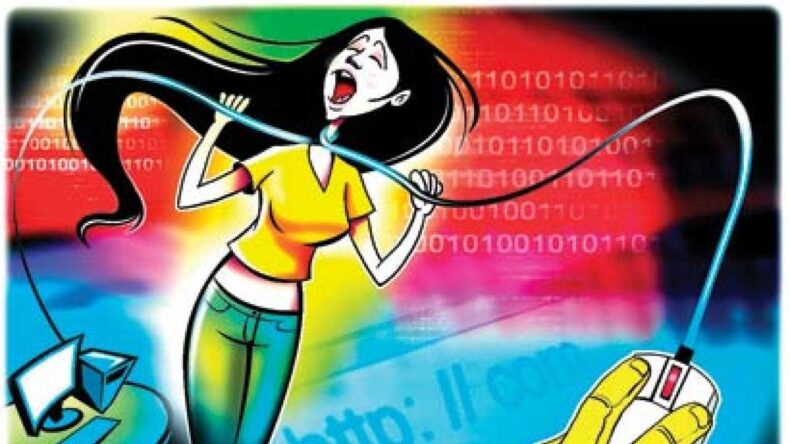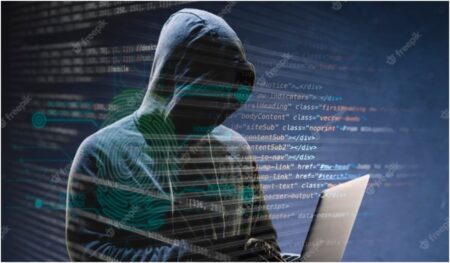“In Urban India, 8 in 10 women have access to the internet and they complain of online offences,” stated LocalCircles based on a survey.
LocalCircles, which describes itself as “social media for communities, governance, and urban daily life,” conducted a survey and gathered 23,000 responses from the residents of 301 urban districts in India. Out of the total respondents, 61 percent were men and 39 percent were women.
Survey spoke of women’s ordeal online
The survey has become important for women as the results indicated multiple and significant directions that need to be attended to by the government to ensure safety for women online. It was found, 83% of female respondents felt that more sincere efforts are needed to make the Internet a safe place for them.

Out of which, 60% of women wished to have a ‘National Women Cyber Grievance Hotline’ established by taking the local police into confidence for immediate actions; 46% of women preferred that ‘Women Cyber Grievance Hotline’ should be started by the government and complaints should be registered and acted upon within 24 hours; 40% of women said taking actions should be made mandatory across all platforms provided that evidence is submitted to the authorities.
Crimes against women online
In the virtual world, women are exposed to precarity, where they can easily become the target without actually knowing about the malefactors. As per the data, out of 52,974 cybercrime incidents, 10,730 were reported against women.
The major violations that take place and hit the female population are Sextortion, Pornography, Cyberstalking, Cyber defamation, Phishing, Cyberbullying, Cybersex trafficking, etc.

Sextortion is performed against women, where their images are morphed in a vulgar manner and using them, the offenders try extracting money from them. If not money, they seek sexual favours from the victims. During the pandemic, the situation worsened and women were asked to entertain the offenders sexually through video conferencing. A woman’s original private pictures or pictures that are morphed are put on illegal sites and are treated as pornographic material, attacking the modesty of a woman. This offence is called Pornography. Sextortion and Pornography are also known as Cyber defamation.
Cyberstalking is again quite common, with the perpetrator pestering the victim with continuous messages, calls, emails, etc. In this situation, simply breaking contact is not easy as the offender is audacious enough to take steps that can affect her badly.

Phishing has been a tool used by fraudsters to extract money by sharing fake links that appear authentic. As soon as the victim clicks on the link and fills in their personal information, they fall into the trap and lose their money and in some cases, privacy.
Cyberbullying includes writing woeful comments on the victim’s posts or sending atrocious messages or putting statements publicly against them to harass them psychologically, financially, etc. The victims are bullied and to stop getting threatened, they are asked to pay a price, which can be in any form as per the desires of the offender.
Cybersex trafficking is yet another way in which the predators offend the victims. Pictures or videos of women involved in sexual activities are recorded without their consent and sold to various broadcasters and clients. Many times, a woman is forced to indulge in cybersex trafficking, which constitutes sexual abuse of women.
A few trusted reports have claimed that the number of cybercrimes taking place against females has increased a hundredfold in 2024, with the pandemic time recording a peak of such incidents.
Government’s take on it
The central government has taken a few initiatives in this direction, such as the Cyber Crime Prevention against Women & Children Scheme, the Indian Cyber Crime Coordination Centre, the National Cyber Crime Reporting Portal, etc. Regardless, the prerogative is with the state government to make guidelines and take actions, as ‘Police’ and ‘Public Order’ are State subjects.

It is, therefore, suggested that the State government gives power to the authorities, specifically the ones dealing with cyber crimes and chalk out guidelines along with subsequent actions relevant to their state. Analysing the pattern of cyber crimes against women in urban area will indicate that each state’s demand is different hence, the schemes and initiatives for each one of them should be designed in ways that are particular to the region.
Listen to the request
In the end, one needs to note that although life has become easier with the internet, especially for women who are demanded to perform dual roles, and that too pragmatically, the need to be aware is essential and can never be compromised. As much awareness is asked of the women users in urban areas, profound steps are called for from the government. The government, after going through the results, should hear the request for having a national hotline number.

An effort for collaboration between public and private organisations is also hailed as if on one hand, the public institution brings with it power and experience, on the other hand, the private institution brings upgraded knowledge, skills, and expertise to the table. Through a spirit of “coming together”, the number of cases may reduce, if not be eradicated.













